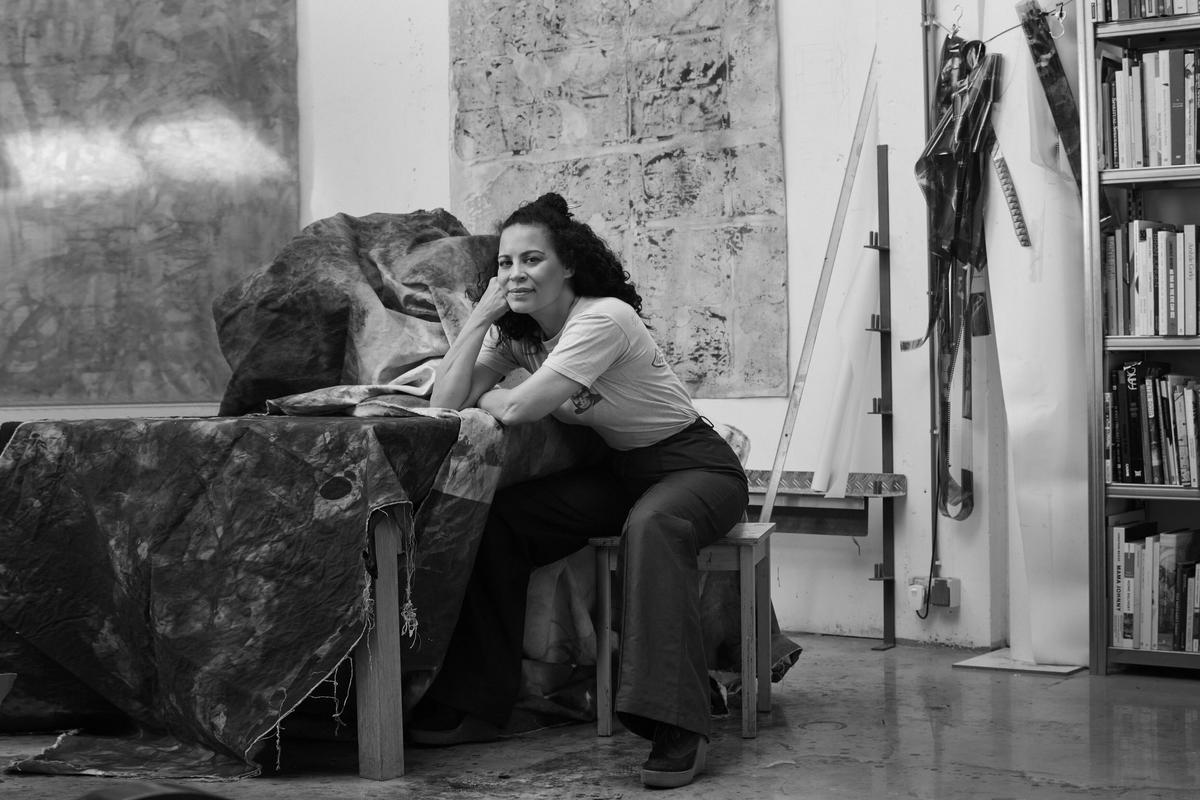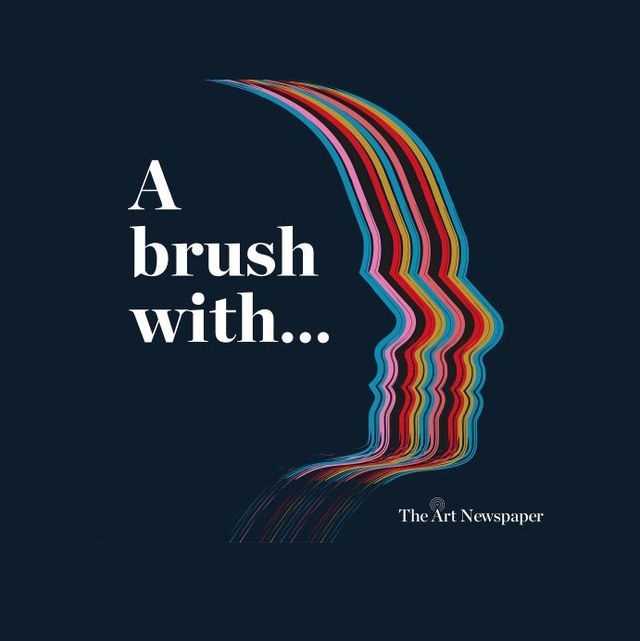In this episode of A brush with..., Ben Luke talks to the American artist Ellen Gallagher about her life and work by exploring her greatest cultural influences. Born in Providence, Rhode Island in 1965, Gallagher studied at Oberlin College in Ohio, the School of the Museum of Fine Arts in Boston and the Skowhegan School of Painting and Sculpture in Maine. She now lives in Rotterdam in the Netherlands. Much of Gallagher's parents' ancestry—in particular her Black father who is from the Cape Verde archipelago off the west coast of Africa—defines the territory of her practice, which relates to the culture and language of the Black diaspora.
Though primarily working in painting and drawing, Gallagher has also worked in sculpture, film and animation. Her early style appears Minimalist and spare from a distance but, up close, one observes intricate drawings of eyes, lips and wigs, which Gallagher has described as “the disembodied ephemera of minstrelsy”—the racist blackface entertainment common in the US from the C19th onwards. In the early 2000s, she used cut-out advertisements from Black culture magazines and transformed them with plasticine, making sculptural reliefs that were often imprinted with witty or incisive symbols and imagery. Many of her paintings refer to the sea and allude to the Afrofuturist myth of Drexciya: a Black Atlantis at the bottom of the Atlantic Ocean, supposedly populated with the children of the mothers of enslaved African women who were thrown—or threw themselves—overboard during their forced journey across the Middle Passage.
In this interview, Gallagher tells us about the extraordinary opportunity she had to live with an original Keith Haring print while at college; her love of Diego Velázquez and Stanley Brouwn; the influence of the Detroit techno band Drexciya, who developed that Atlantic Ocean myth in the 1990s; how Herman Melville, in his novels and novellas, wrote more perceptively about race than he is often credited with, and much more. And, of course, she answers the ultimate questions we ask in each episode: if you could live with just one work of art, what would it be? And what is art for?
A brush with… series 4 runs from 9-30 June 2021, with episodes released on Wednesdays. You can download and subscribe to the podcast here. This episode is sponsored by Bloomberg Connects.
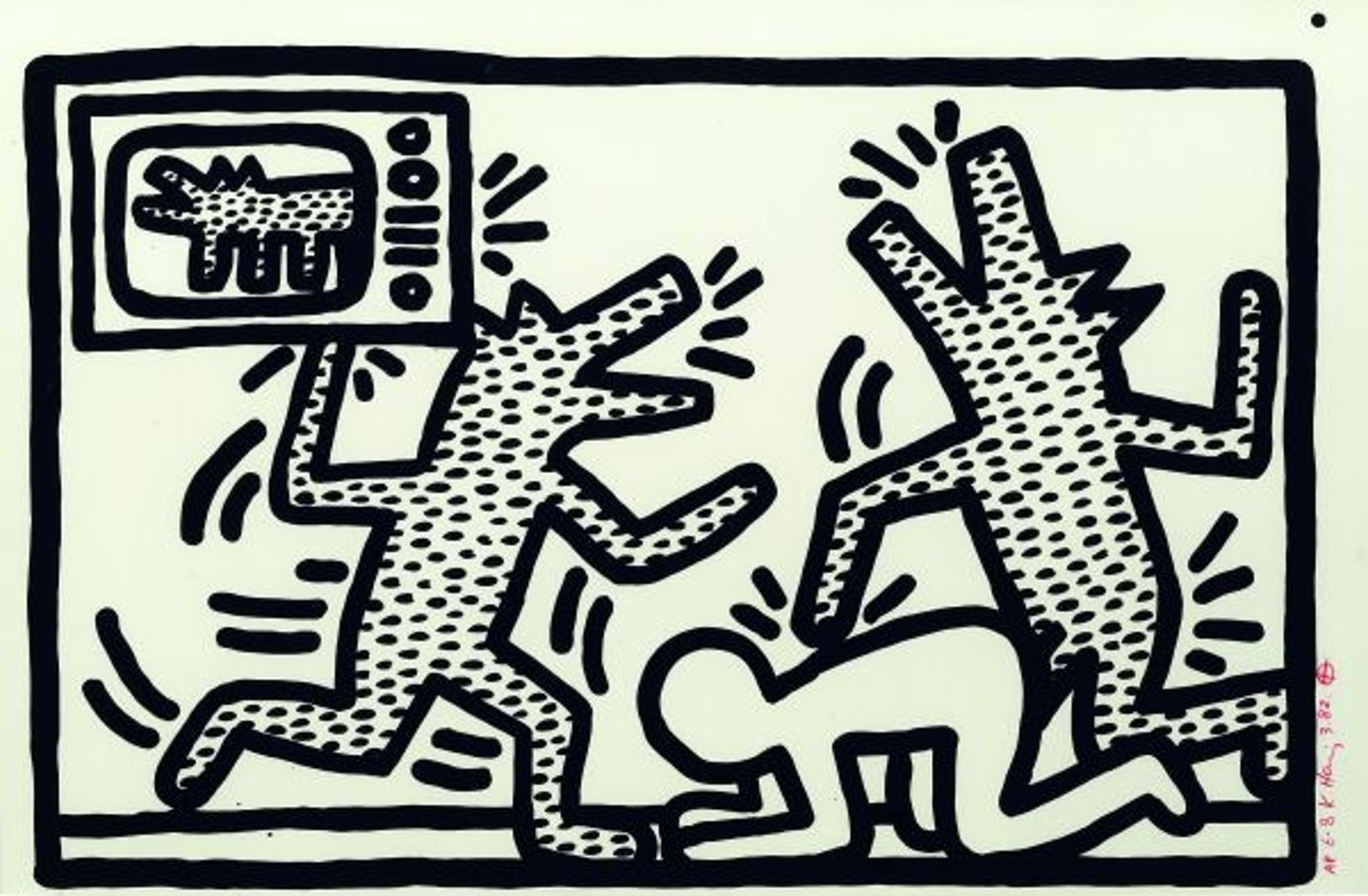
Keith Haring's Untitled #1 (1982)
Ellen Gallagher on... the first work of art she owned (temporarily)
"Keith Haring's Untitled #1 (1982). It's a black and white lithograph and shows two dogs standing upright on their hind legs laughing and barking. You feel the sound in the work. One of the dogs holds a TV over his shoulder and on the TV screen is a dog on all fours. And the other upright dog is penetrating a man who is bent over between them. It's a really magical work. I think it's about images and seeing, but I felt it was about revolution. [...] [Former US president] Ronald Reagan had recently come to power. And even though I was a teenager, it was the first time that I felt as an adult I could see the implications of complicity."
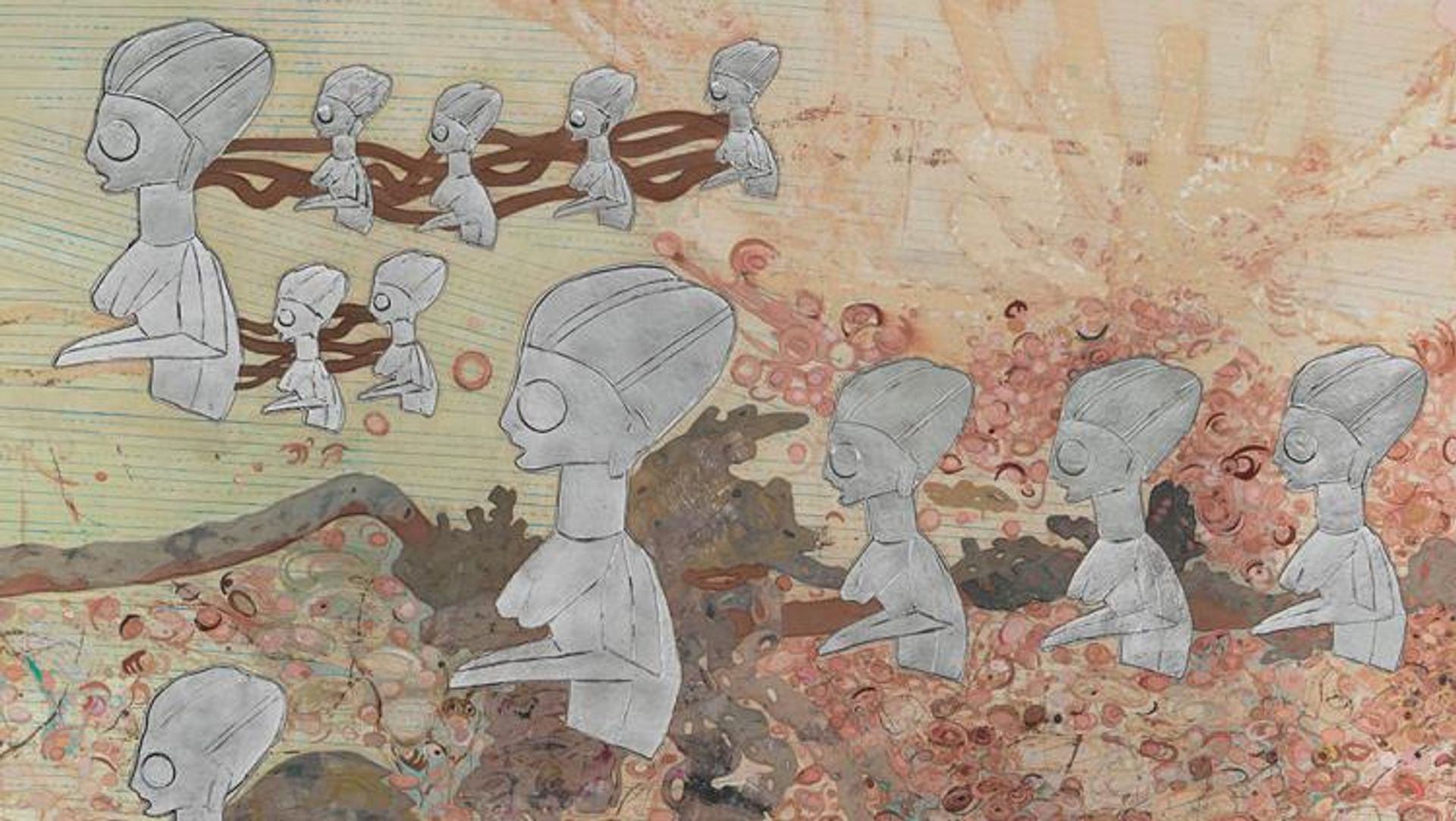
Ellen Gallagher. Ecstatic Draught of Fishes (2020) © Ellen Gallagher. Courtesy the artist and Hauser & Wirth.
... the inspiration for her exhibition at Hauser & Wirth
"The show's title comes from Rubens's The Miraculous Draught of Fishes and the version I’m referring to is an oil sketch from Cologne that I saw at the Museum Boijmans in Rotterdam. And unlike the one in London, which is the more full image, this work [...] doesn't show a bunch of beautiful fish but rather what looks like a single sea creature. It's more singular, and it's really creepy. It's more like an omen than something that feeds you. It's exciting to see him working through these different proposals that are radically different. You can do that with painting in a way you couldn't with a novel. [...] And he uses sculptural forms for the apostles he depicts. The figures in the boat are actually from sculptures that he was looking at when he was in the Villa Medici in Rome. So it's really interesting that he's already transferring sculpture into painting. I thought it would be interesting to do that with the paintings in the show, [themselves based off African Fang carvings at the Metropolitan Museum in New York], to bring those sculptural works back into the 2D space of painting."
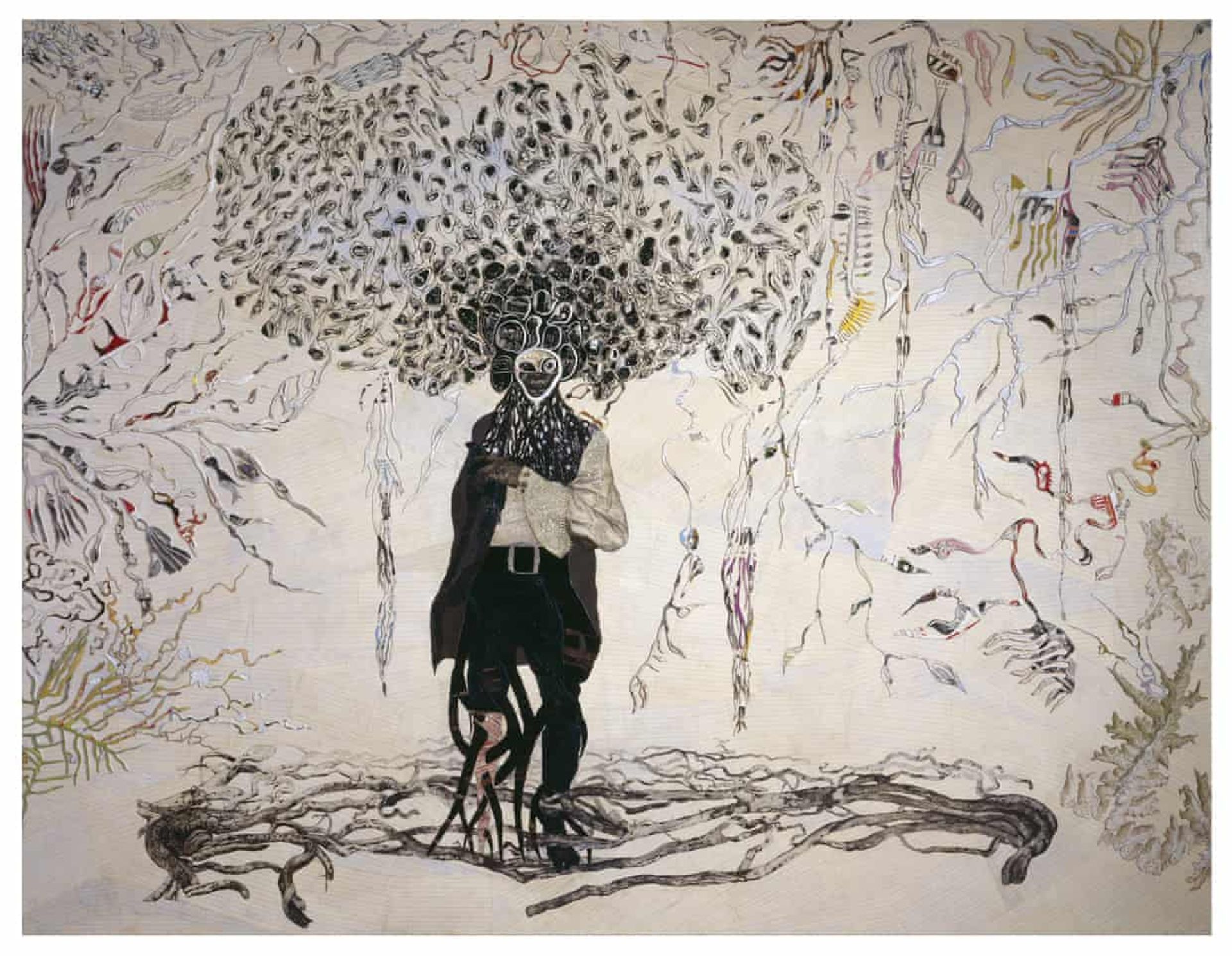
Ellen Gallagher’s Bird in Hand 2006. Photograph: © Ellen Gallagher
... Herman Melville and race
"The Confidence Man (1857) is basically a whole story in blackface. It takes place on a steamship, and each chapter is its own narrative, its own guise. And what you never realise is—are there actually this many crooks on this steamship [and] in America? Or is it one person in disguise the whole time? Melville is really somebody who addresses the rot at the core of America, of the promise of America. And I think for that he's really silenced as a race writer."
• Ecstatic Draught of Fishes is at Hauser & Wirth, London (until 31 July); Gallagher's work is featured in the Sonsbeek Quadrennial at various locations in Arnhem, The Netherlands (2 July-29 August); her work is also featured in Mirrors and Windows, a group show at the Sammlung Philara collection in Dusseldorf (until 3 October) and in On Paper at the Andreiss Eyck gallery in Amsterdam (until 31 July); Gallagher's major work Deluxe is on view at the Broad Museum in Los Angeles as part of the group exhibition Invisible Sun (until 3 October); and another group show featuring Ellen's work New Time: Art and Feminisms in the 21st century opens at the Berkeley Art Museum and Pacific Film Archive at the University of Berkeley in California (28 August-30 of January 2021).



